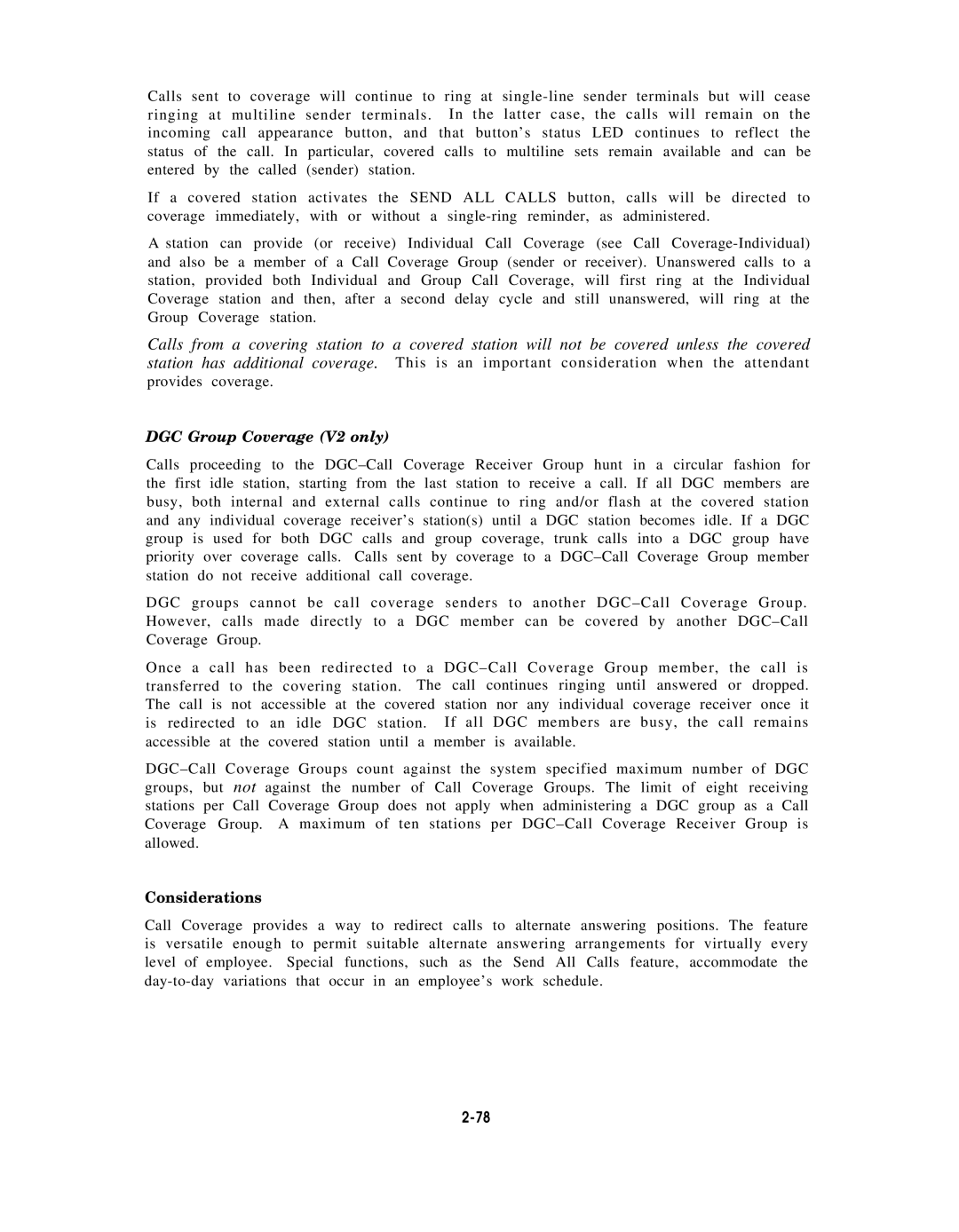Calls sent to coverage will continue to ring at
If a covered station activates the SEND ALL CALLS button, calls will be directed to coverage immediately, with or without a
A station can provide (or receive) Individual Call Coverage (see Call
Calls from a covering station to a covered station will not be covered unless the covered station has additional coverage. This is an important consideration when the attendant
provides coverage.
DGC Group Coverage | (V2 only) |
|
|
|
|
| ||
Calls proceeding to | the | a | circular | fashion | for | |||
the first idle station, | starting from | the | last station to receive a call. If | all DGC | members | are | ||
busy, both internal | and external | calls | continue to ring and/or flash | at | the covered station | |||
and any individual coverage receiver’s station(s) until a DGC station becomes idle. If a DGC group is used for both DGC calls and group coverage, trunk calls into a DGC group have priority over coverage calls. Calls sent by coverage to a
DGC groups cannot be call coverage senders to another
Once a call has been redirected to a
Considerations
Call Coverage provides a way to redirect calls to alternate answering positions. The feature is versatile enough to permit suitable alternate answering arrangements for virtually every level of employee. Special functions, such as the Send All Calls feature, accommodate the
